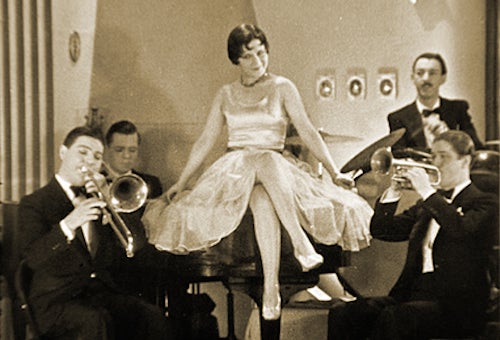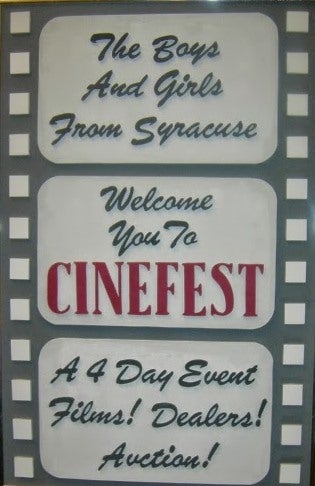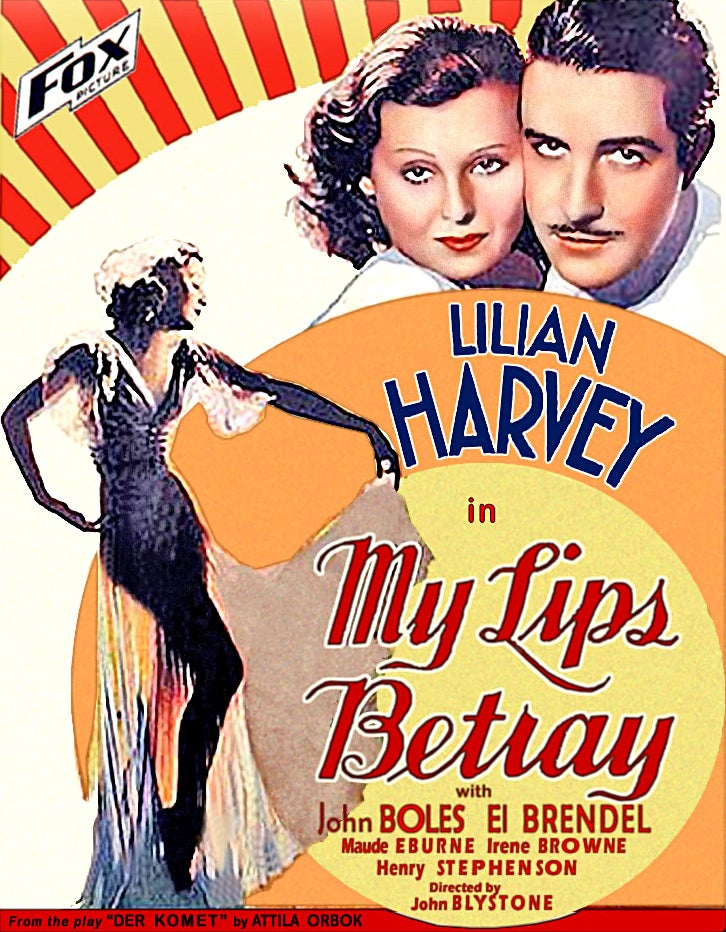
Me and the Boys (1929)
Back in the fall, the Syracuse Cinephile Society announced that their next Cinefest film festival in March 2015 would be their “grand finale.” While reasons were not given for the shuttering, one could imagine that after 35 years, this group of dedicated film enthusiasts, who had year-to-year put on an amazing festival of classic films without any professional staff whatsoever, and without a fixed budget, were just tired. Who could blame them, given that two of their founders and guiding lights, Phil Serling and John Weber, had passed away? Yet, despite absolutely frigid temperatures in the low teens, Cinefest’s largest crowd in years made the pilgrimage to the Liverpool Holiday the weekend of March 19 – 22. Only at Cinefest 35 could you see films that are never on television or released on home video, and are unavailable on any big screen.
It was a joyous and nostalgic occasion with a bittersweet air of sadness, given the fact that many attendees had been regulars for decades. However, Leonard Maltin, who has come to Syracuse almost every year since 1981, functioning  as a master of ceremonies for the event’s annual auction of films and film memorabilia, said he refused to be sad. Having attended my first Cinefest in 1987, I kept seeing ghosts: Bill Everson, film historian and collector extraordinaire; James Card, my first boss at George Eastman House; film producers and collectors, Alex and Richard Gordon; Gordon Berkow, Herb Graff, Phil Serling, all collectors who generously lent their films to the festival, often introducing them with arcane bits of film lore.
as a master of ceremonies for the event’s annual auction of films and film memorabilia, said he refused to be sad. Having attended my first Cinefest in 1987, I kept seeing ghosts: Bill Everson, film historian and collector extraordinaire; James Card, my first boss at George Eastman House; film producers and collectors, Alex and Richard Gordon; Gordon Berkow, Herb Graff, Phil Serling, all collectors who generously lent their films to the festival, often introducing them with arcane bits of film lore.
I also spent more time than usual just talking to people, who I have known for decades and who have become friends, like Leonard Maltin, Dennis Atkinson, David Shepard, Rickie Scheckman, Jessica Rossner, Michael Schlesinger, Ed Stratman, Mike Mashon, Joe Yranski, Richard and Diane Koszarski, Terry and Margaret Hoover, Karen Everson, Howard and Elaine Koladney, Jon Mirsalis, Ron Hutchinson and many others. Meanwhile, the film screenings continued until late Sunday night (seriously behind schedule), as the faithful seemingly refused to have it all come to a close. The program, in fact, ended with The Sea Lion (dir. Rowland V. Lee, 1921), which was the first silent film screened at Cinefest 1 in 1981.
Due to other commitments, I missed much of the first day’s programming, but was able to catch the Thursday evening screenings of Victor Schertzinger’s The Return of Peter Grimm (1926) and William K. Howard’s Captain Fly-by-Night (1922). Based on a 1911 melodrama and starring Janet Gaynor, Peter Grimm details small town life in America, and like many films in that particular genre, it railed against modernity and the loss of traditional values. In the latter film, Johnston McCulley plagiarized his own novel The Mark of Zorro, while director Howard keptthe action moving with his tongue firmly in his cheek.
Friday morning, I was up early for the 9 a.m. screening of Men On Call (1931) with Edmund Lowe and Mae  Clarke, one of five 16mm Fox films supplied by UCLA Film & Television Archive. The film was a surprisingly mature study in gender relations and the old male double standard. Equally modern in its story was The Painted Woman (1932), a film about a woman who insists on her freedom before she gets married. Featuring a stellar performance by Peggy Shannon, the film was a hit at Cinefest. One of my personal favorites was My Lips Betray (1933), starring the German-British musical comedy star Lilian Harvey, who was hugely popular in Europe (she starred in The Congress Dances the previous year). Like in her breakout hit, Harvey here plays a commoner in a mythical European kingdom who is in love with a prince, except that the director, John G. Blystone, lacks the light touch of an Ernst Lubitsch or even an Erik Charell.
Clarke, one of five 16mm Fox films supplied by UCLA Film & Television Archive. The film was a surprisingly mature study in gender relations and the old male double standard. Equally modern in its story was The Painted Woman (1932), a film about a woman who insists on her freedom before she gets married. Featuring a stellar performance by Peggy Shannon, the film was a hit at Cinefest. One of my personal favorites was My Lips Betray (1933), starring the German-British musical comedy star Lilian Harvey, who was hugely popular in Europe (she starred in The Congress Dances the previous year). Like in her breakout hit, Harvey here plays a commoner in a mythical European kingdom who is in love with a prince, except that the director, John G. Blystone, lacks the light touch of an Ernst Lubitsch or even an Erik Charell.
One of our biggest hits at Cinefest was Me and the Boys (1929), an early sound short preserved by UCLA with funds from the Vitaphone Project (Dudley Heer, Mark Cantor, Frank Buxton, Ron Hutchinson) and Hugh Hefner, a film that for decades was considered a “holy grail” for jazz buffs. Lost for 85 years, a silent print turned up in Australia in 2013 to match surviving Vitaphone disks. Finally, The Second Floor Mystery (1930), a Warner Brothers melodrama starring a 17-year-old Loretta Young, had people believing they had fallen down a rabbit hole, its convoluted plot sliding through multiple levels of reality, so that one is never sure what is real and what isn’t. While the last two mentioned titles were shown on DVD, the Archive's 16mm prints looked spotless, prompting an incredible number of compliments about UCLA and the work we do.
< Back to Archival Spaces blog






 Mobile Navigation
Mobile Navigation

